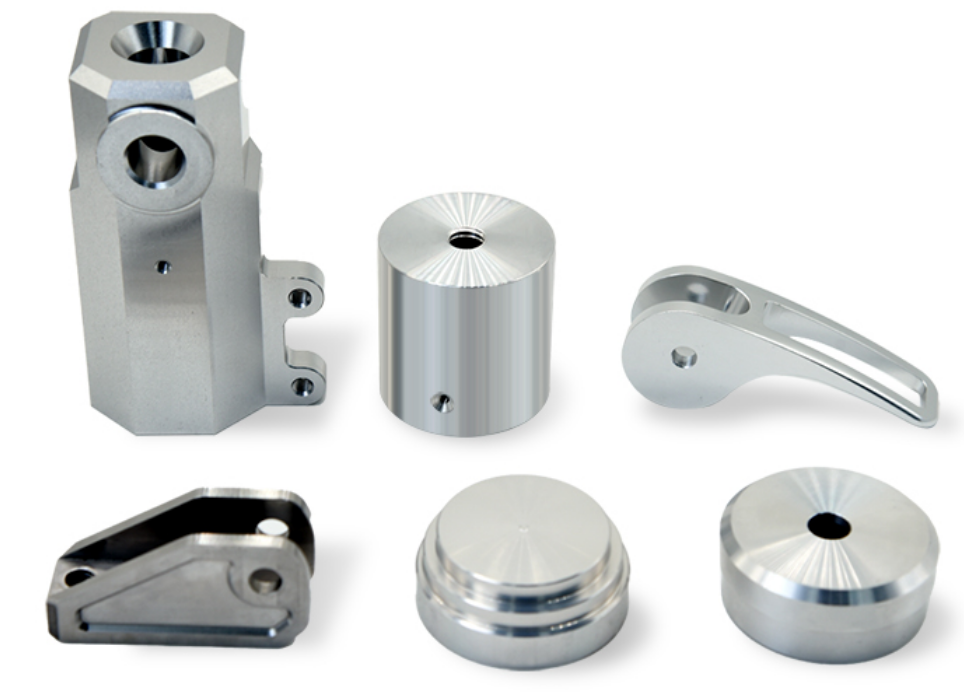Aluminium is rich in resources and suitable for different industries. This easy-to-process non-ferrous metal has desirable structural and chemical properties, making it the material of choice for different applications. As a light-weight and less dense material, machining aluminum parts is a challenging task. Therefore, machining tools are very important. The following will introduce how to choose CNC aluminum machining tools.
The machinability of different grades of aluminum parts depends on the efficiency of the CNC machine and supporting tools. With high machining rates, production teams are able to offset costs through structured mass production strategies.
Maximum productivity of CNC aluminum parts can be achieved by optimizing the software employed by a particular CNC machine, automated tool indexing, and correct sizing of the CNC spindle. An easier way for a production team to improve the quality of CNC aluminum parts is to choose the right tool for machining.
How to choose CNC aluminum machining tools
How to choose the right machining tool for aluminum parts
Inserts refer to removable cutting edges that are screwed onto the body of the cutting tool to clamp onto the CNC machine tool holder. The blade can be clamped to the tool using screws or a suitable adhesive. They are commonly used for rapid prototyping and mass production of CNC aluminum parts. The inserts are better suited for larger diameter aluminum parts, can handle higher feed rates, and can handle deeper cuts.
1. Need to consider the specifications of aluminum parts
The ultimate goal of machining is to produce a finished workpiece that meets a design or specific requirements. Specifications can be in the form of part thickness, load-carrying capacity, and dimensions. CNC machines are capable of handling aluminum parts of all sizes and shapes through efficient tool sequencing and manipulation. Increased throughput requires the use of indexable tools. Such tools allow operators to change tool inserts if necessary, allowing multiple automated machining operations on aluminum parts. CNC tool inserts come with different cutting edges and can be used for post-processing operations such as polishing and grinding of aluminum parts. The performance of a tool insert in a CNC aluminum part machining environment depends on insert shape, clearance and rake angle.
2. Insert shape
Tools for CNC aluminum parts have specific geometries that affect the quality of the final product. Inserts come in different shapes to fit specific CNC tool holders. Knife blades for aluminum are available in diamond, round, triangular and square shapes. Better part quality can be achieved with sharp-angled inserts. For example, a 30- to 35-degree tool insert would be more suitable for high-speed surface machining of forged aluminum parts. Turning operations on forged aluminum with diamond-shaped inserts will result in a high-quality surface finish.
On the other hand, CNC machining cast aluminum parts will require the operator to use round inserts for better quality. Cast aluminum is rougher on the outside; machining with sharp tools will result in a poor surface finish. Tool insert shape affects CNC parameters such as feed rate, depth of cut and tool clearance. Sharper shapes will require smaller feed rates and greater tool clearance.
3. Front angle and approach angle
The rake angle is the angle between the tip of the cutting tool relative to the workpiece clamped on the CNC machine. This angle can be positive or negative, depending on the position of the cutter blade. A positive rake angle is recommended when machining aluminum parts. Since aluminum is a soft material, cutting resistance must be minimized throughout the production process.
When machining aluminum parts, chips build up around the tool, which likewise affects the quality of the final product. A positive rake angle will ensure efficient chip evacuation. A positive rake angle helps control temperature by reducing cutting temperature. This factor provides an adequate machining environment for aluminum parts and increases tool insert life.
This article mainly introduces how to choose CNC aluminum parts machining tools. By browsing the full text, we can know that when CNC machining aluminum parts, we need to pay attention to the specifications, insert shapes, tool rake angle and approach angle of aluminum parts. Aluminium parts are a lightweight and less dense material, and machining them can be a challenging task. The purpose of fast machining can be achieved by selecting the correct tool.
Hot tags:
cnc machining donguan
cctv cnc machining
oem cnc machining
cnc machining kits
cnc machining 4060
cnc design machining
rapid cnc machining
cnc turnining machining
cnc machining plastic
peek cnc machining
cnc machining serivces

